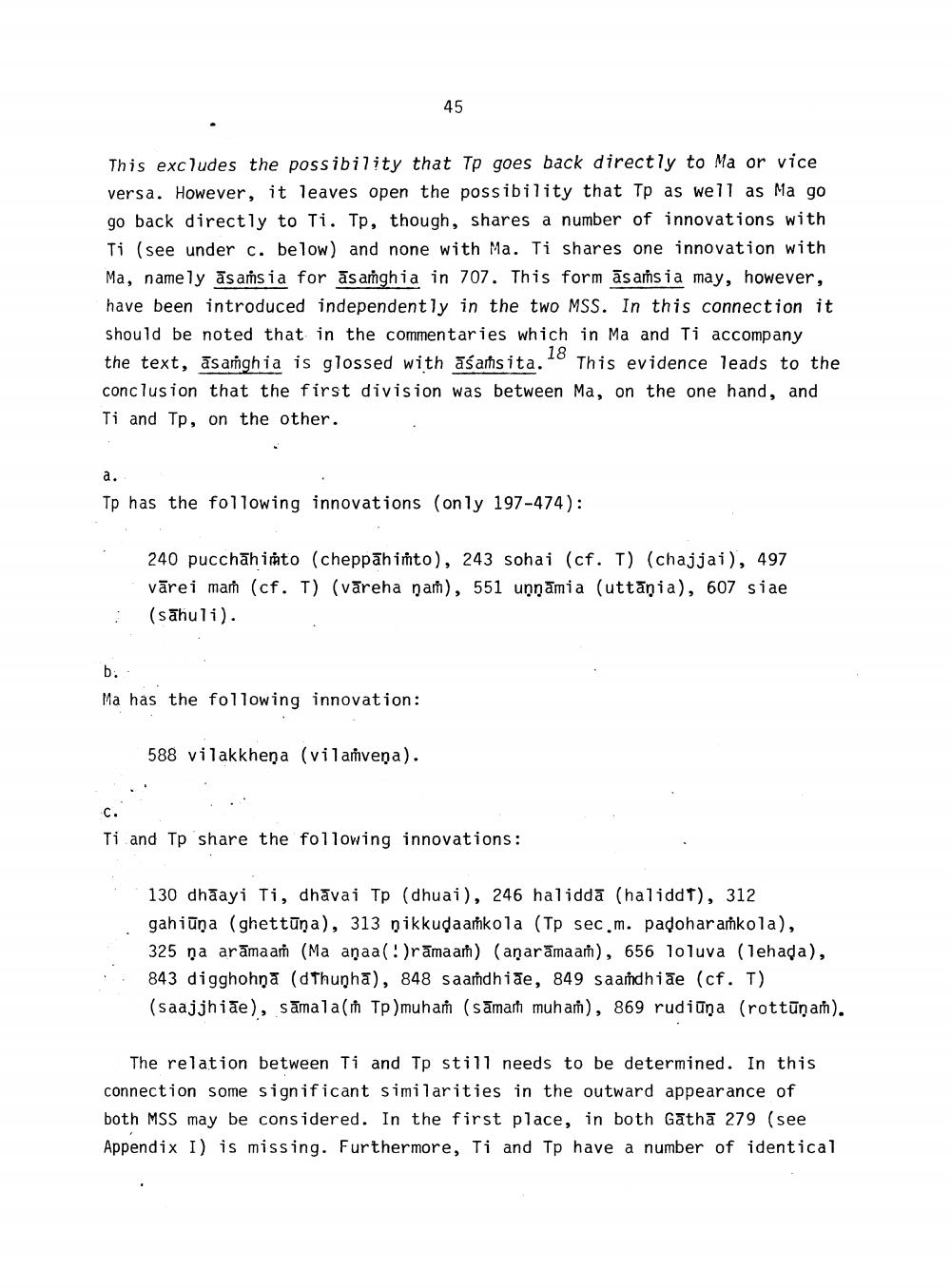________________
45
This excludes the possibility that Tp goes back directly to Ma or vice versa. However, it leaves open the possibility that Tp as well as Ma go go back directly to Ti. Tp, though, shares a number of innovations with Ti (see under c. below) and none with Ma. Ti shares one innovation with Ma, namely as aṁs ia for āsamghia in 707. This form āsaṁsia may, however, have been introduced independently in the two MSS. In this connection it should be noted that in the commentaries which in Ma and Ti accompany the text, asanghia is glossed with aśassita. 18 This evidence leads to the conclusion that the first division was between Ma, on the one hand, and Ti and Tp, on the other.
a. Tp has the following innovations (only 197-474):
240 pucchāhito (cheppāhisto), 243 sohai (cf. T) (chajjai), 497 vārei maṁ (cf. T) (vāreha naṁ), 551 unnāmia (uttānia), 607 siae (sāhuli).
b
Ma has the following innovation:
588 vilakkheņa (vilaveņa).
c.
Ti and Tp share the following innovations:
130 dhāayi Ti, dhāvai Tp (dhuai), 246 haliddā (haliddf), 312 gahiūņa (ghettūna), 313 nikkudaakola (Tp sec.m. padohar arkola), 325 na arāmaan (Ma anaa(!)rāmaar) (aņarāmaam), 656 loluva (lehada), 843 digghohņā (d Thu ha), 848 saaṁdhiae, 849 saadhie (cf. T) (saajjhide), sāmalam Tp)muham (sāma muham), 869 rudiūna (rottūņań).
The relation between Ti and Tp still needs to be determined. In this connection some significant similarities in the outward appearance of both MSS may be considered. In the first place, in both Gathā 279 (see Appendix I) is missing. Furthermore, Ti and Tp have a number of identical




